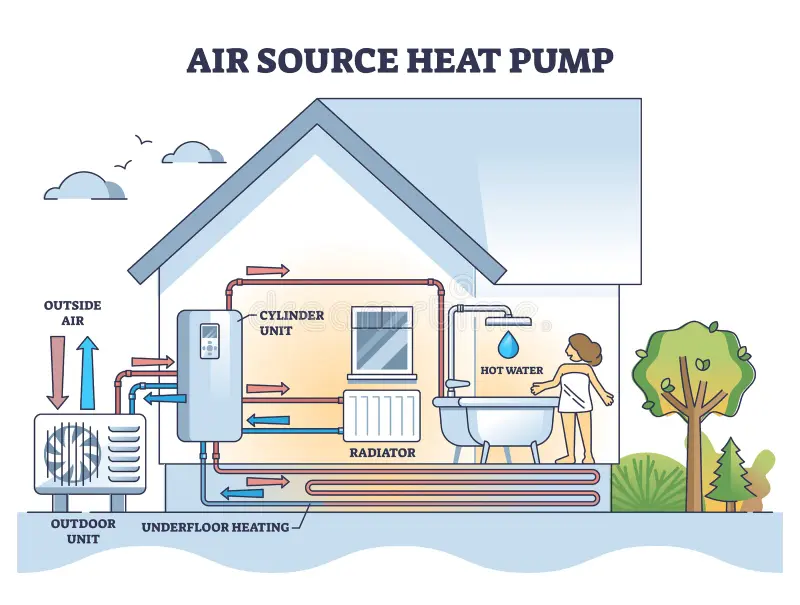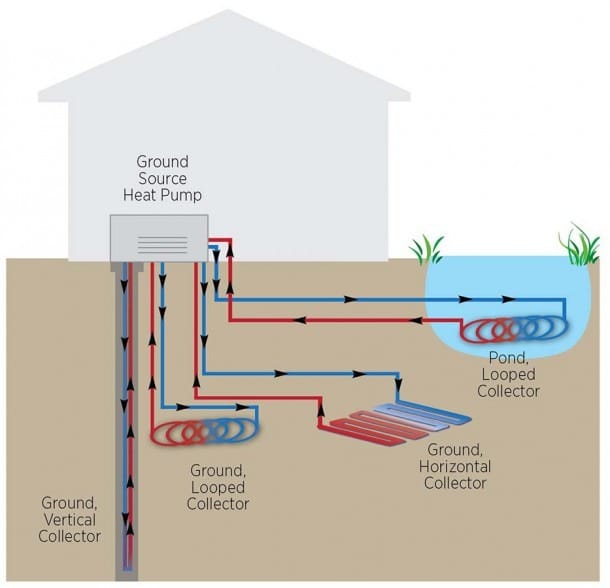
Understanding Heat Pumps: A Guide for Northern Colorado Homeowners
Heat pumps are gaining popularity in Northern Colorado as homeowners seek efficient, eco-friendly heating and cooling solutions. Unlike traditional systems, heat pumps offer both warmth in winter and cool air in summer, making them ideal for NoCO’s variable climate. This blog post explores what heat pumps are, how they work, and whether they’re right for your home, with a focus on rebates to help with costs.
What Is a Heat Pump?
A heat pump is a versatile system that transfers heat to heat or cool your home, using electricity instead of burning fuel. This makes it highly energy-efficient, reducing bills and emissions. In Northern Colorado, where temperatures swing from freezing winters to hot summers, heat pumps provide year-round comfort without separate systems.
There are three main types
Air-Source Heat Pumps: These transfer heat between indoor and outdoor air, making them the most common and cost-effective for NoCO homes.
Ground-Source (Geothermal) Heat Pumps: These use the ground’s stable temperature for higher efficiency but require more upfront investment.
Water-Source Heat Pumps: These use water sources like lakes, less common in Northern Colorado.
Heat pumps can cut electricity use for heating by up to 75% compared to traditional systems, per the U.S. Department of Energy. They also dehumidify better than standard ACs, enhancing summer comfort.


Call 970-792-7154 For a Free Estimate from A-Team HVAC on Your Heat Pump Installation in Northern Colorado
How Does a Heat Pump Work?
Heat pumps operate on a vapor compression cycle, similar to a refrigerator but reversible. They use a refrigerant that cycles through four components: evaporator, compressor, condenser, and expansion valve.
Evaporator: In heating mode, the refrigerant absorbs heat from outdoor air (even in NoCO’s cold winters) and turns into a gas.
Compressor: The gas is compressed, raising its temperature and pressure.
Condenser: The hot gas releases heat indoors, condensing back to a liquid.
Expansion Valve: The liquid’s pressure drops, readying it to absorb heat again.
In cooling mode, the cycle reverses, pulling heat from indoors to cool your home. Heat pumps deliver 2–4 units of heat per unit of electricity, per Carrier, making them far more efficient than furnaces or baseboard heaters.
Cold-climate heat pumps, designed for subfreezing temperatures, ensure reliability in Northern Colorado. Their efficiency, measured by Seasonal Coefficient of Performance (SCoP), averages higher than traditional systems, per Energy Saving Trust.
Is a Heat Pump Right for You? Plus Rebates to Help
Choosing a heat pump depends on your home’s insulation, local climate, and budget. In Northern Colorado, cold-climate heat pumps handle winter lows efficiently, but well-insulated homes maximize savings. Upfront costs can be higher, but rebates and long-term energy savings make them attractive.
Climate: NoCO’s cold winters require cold-climate heat pumps for optimal performance.
Insulation: Poor insulation reduces efficiency; upgrades may be needed.
Costs: Installation costs more than furnaces, but rebates may offset expenses.
2025 Rebates in Northern Colorado:
Xcel Energy Rebates: Up to $2,250/ton for cold-climate air-source heat pumps (15.2 SEER2, 7.8 HSPF2), per Xcel Energy.
Federal Tax Credits: 30% of installation costs, up to $2,000, via the Inflation Reduction Act; $1,500 for Energy Star-certified units, per EnergySage.
Colorado Heat Pump Tax Credit: Offers discounts through registered contractors, per Colorado Energy Office.
HEAR Program: Up to $8,000 for income-qualified households, rolling out in 2025, per Colorado Energy Office.
HOMES Program: Rebates for whole-home efficiency upgrades, including heat pumps, based on savings.
